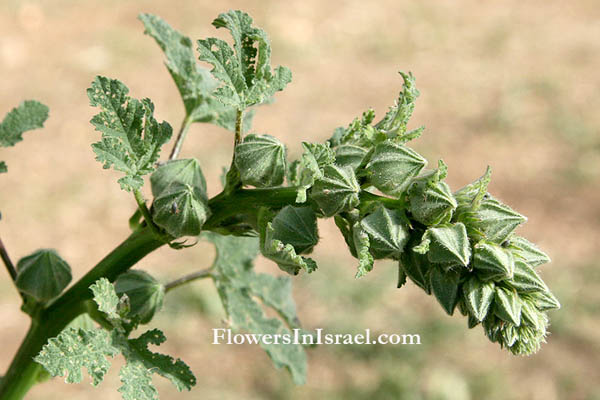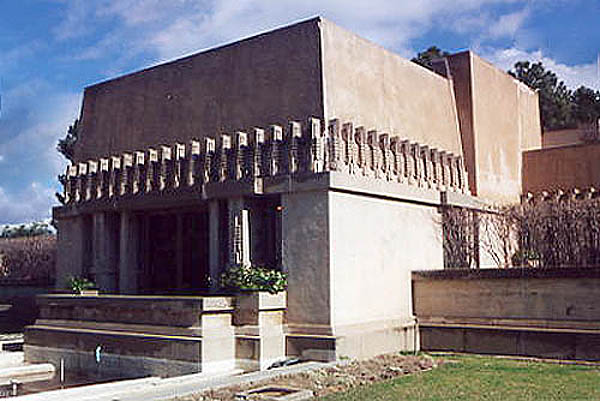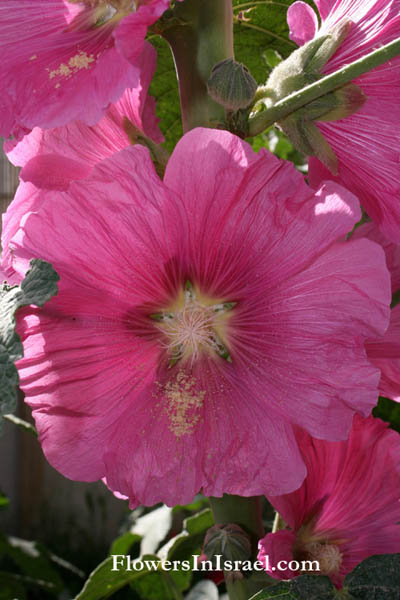
Derivation of the botanical name:
Althaea, from the Greek word altho "to cure"; αλϑαια; Althaea officinalis, marsh mallow.
setosa, "very hairy, bristly"; bristly-hairy.
The Hebrew word: חוטמית, chotmit from a bulge, the “staminal column” or “stamen tube”, arising from the centre of the flower, reminiscent of a snout and originates from the name in Arabic, Khatima.
- The standard author abbreviation Boiss. is used to indicate Pierre Edmond Boissier (1810 – 1885), a Swiss botanist, explorer and mathematician.
- The standard author abbreviation Alef. is used to indicate Friedrich Georg Christoph Alefeld (1820 – 1872), a German botanist, author and medical practitioner.
The family name Malvaceae is one of the many species of flowering plants that contains the genus Malva, the mallow genus, and its relatives, including the marshmallow plant (Althaea officinalis).
The two species that are common in Israel are the Alcea setosa and the Alcea dissecta. The Alcea setosa is widespread in the Mediterranean mountainous open areas. Rare in Judea and Samaria, found quite in the Carmel and Lower-Galilee. In Upper Galilee it is replaced by the Alcea dissecta. This plant is specific near the Banias and the Dan and widespread in the Dan Valley and Upper- Galilee and it stands out alongside the road in spring and the beginning of summer.
Althaea is a perennial plant growing to 150-200cm tall, with broad, rounded, palmate lobed leaves with 3-7 lobes and numerous pink flowers, on the erect central stem. The corolla is 15 to 20 cm in diameter.
The Sages wrote about the Altheae in general.
-
Hippocrates (c.460BCE-c.377BCE) Greek physician and father of modern medicine, described the value of althea in the treatment of wounds.
- Theophrastus (c. 372-286 BC), the successor of Aristotle in the Peripatetic school, reported that it was taken in sweet wine for coughs.
- Dioscorides (c.40-c.90CE), another Greek physician a few centuries later, prescribed a vinegar infusion as a cure for toothaches and recommended a preparation of the seeds to soothe insect stings.
- Horace (65-8 BC), Roman poet and satirist, mentions it in reference to his own diet, which he describes as very simple: "Me pascunt olivae, me cichorea, me malvae" ("As for me, olives, endives, and mallows provide sustenance.")
- Pliny (23-79) said: 'Whosoever shall take a spoonful of the Mallows shall that day be free from all diseases that may come to him.'It is cultivated extensively in Europe for medicinal purposes, acting as a demulcent. In 812, Charlemagne enjoined its culture in France.
- James Burnett, Lord Monboddo (1714 -1799), a Scottish judge, scholar of language evolution and philosopher, describes his translation of an ancient epigram that demonstrates malva was planted upon the graves of the ancients, stemming from the belief that the dead could feed on such perfect plants.
- Frank Lloyd Wright designed and built a house between 1919 and 1921 in LA called Hollyhock House for oil heiress Aline Barnsdall.
The house takes its name from the favorite flower of Aline Barnsdall. At her request, hollyhocks were incorporated into the decorative program of the house, and stylized representations of the flower may be found on the roofline, walls, columns planters and furniture.
- And not to forget Marshmallow creme, the real marshmallows, made the traditional way, with powdered marshmallow root, egg whites, cane sugar, and vanilla extract. The traditional recipe of the confection used an extract from the mucilaginous root of the marshmallow plant, the Althaea officinalis, instead of gelatin. The root extract (halawa extract) is also used to make a Middle Eastern snack called halva (חלבה), very popular in Israel and can be found in almost every grocery store.
- The Arabic word halwa is a generic term for candy, or "sweetmeat" in literal translation and comes from the Arabic word halwa; the root word is hilwa meaning sweet. The root word is also the basis for the Arabic words for "good" (hala') and "very sweet" (hali).
See the list of Medicinal herbs in Israel, the parts used and their medical uses to treat various diseases
Bible resources:
- Job 6:6
Is tasteless food eaten without salt,
or is there flavor in the sap of the mallow?
I refuse to touch it;
such food makes me ill.

Hollyhock House in LA designed and built by Frank Lloyd Wright (1869-1959).
|


